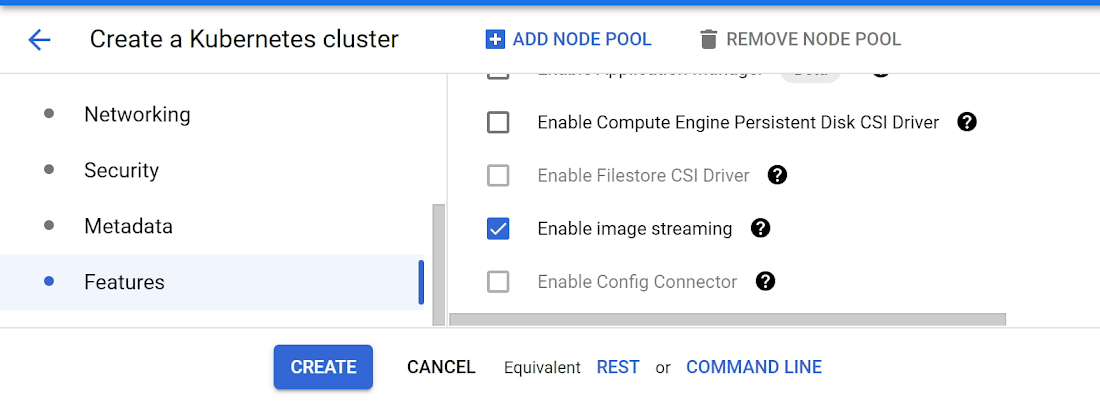Getting Started with GKE Image Streaming
Google Cloud excited to announce the general availability of a new feature in Google Kubernetes Engine (GKE): image streaming. This revolutionary GKE feature has the potential to drastically improve your application scale-up time, allowing you to respond to increased user demand more rapidly, and save money by provisioning less spare capacity. We achieve this by reducing the image pull-time for your container from several minutes (in the case of large images) to a couple of seconds (irrespective of container size), and allowing your application to start booting immediately while GKE streams the container data in parallel.
Image streaming is available today at no additional cost to users of GKE’s Standard mode of operation, when used with images from Artifact Registry, Google Cloud’s advanced registry for container images and other artifacts. Images in Container Registry, or external container registries, are not supported for image streaming optimization (they will continue to work, just without benefiting from image streaming), so now is a great time to migrate them to Artifact Registry if you haven’t already.
You can use image streaming on both new and existing GKE clusters. Be sure to enable the Container Filesystem API, use the COS containerd node image variant, and reference container images that are hosted in Artifact Registry. In the UI, simply check the “enable image streaming” checkbox on the cluster creation page.

Alternately, from the CLI, here’s how to create an image streaming cluster:
gcloud container clusters create CLUSTER_NAME \--region=COMPUTE_REGION \--image-type="COS_CONTAINERD" \--enable-image-streaming
You can also upgrade your existing clusters to enable image streaming through the UI, or by running:
gcloud container clusters update CLUSTER_NAME \--enable-image-streaming
and then deploy your workload referencing an image from Artifact Registry. If everything worked as expected, you should notice your container entering the “Running” status about a second after the “ContainerCreating” status.
To verify that image streaming was engaged as expected, run
$ kubectl get eventsdefault 11s Normal ImageStreaming node/gke-riptide-small-default-pool-27b7945d-k7mt Image us-docker.pkg.dev/google-samples/containers/gke/gb-frontend:v5 is backed by image streaming.
The ImageStreaming event as seen in the example output above indicates that image streaming was engaged for this image pull.
Since image streaming is only used until the image is fully downloaded to disk, you’ll need to test this on a fresh node to see the full effect. And remember, to get image streaming, you need to enable the API, turn on image streaming in your cluster, use the COS containerd image, and reference images from Artifact Registry. Image streaming does introduce an additional memory reservation on the node in order to provide the caching system, which reduces the memory available for your workloads on those nodes. For all the details, including further information on testing and debugging, check out the image streaming documentation. For more such capabilities register to join us live on Nov 18th for Kubernetes Tips and Tricks to Build and Run Cloud Native Apps.
Take the next step
Start building on Google Cloud with $500 in free credits and 20+ always free products.
